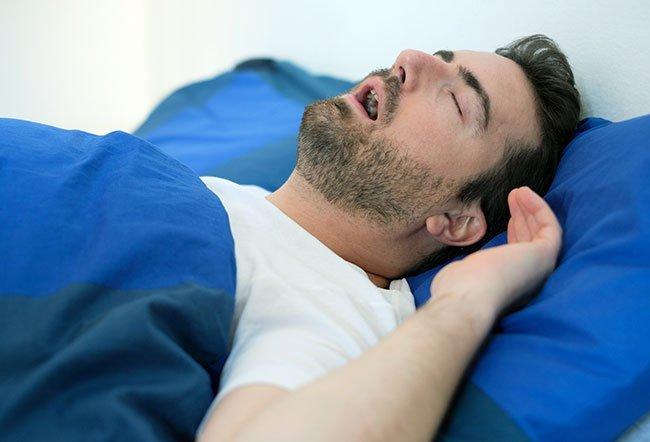When lying down, a person with orthopnea experiences shortness of breath that improves when they are in an upright position. Although orthopnea can be caused by a variety of medical issues, heart failure and lung illness are common causes.
Most persons with orthopnea report an immediate improvement in their breathing as they stand up from a prone or lying position. Paroxysmal nocturnal dyspnea is a similar ailment in which the sufferer is awoken a few hours after going to sleep due to episodes of severe shortness of breath.
Reasons for, and methods for identifying and treating, orthopnea are discussed in this article.
What is orthopnea?
Medical professionals use the word “orthopnea” to describe a condition in which a person experiences difficulty breathing while resting flat but finds relief when they sit or stand up. Depending on the reason, orthopnea can develop gradually over time or appear suddenly. Individuals may report using many pillows to help them sleep owing to chronic shortness of breath. A greater need for pillows when sleeping may be indicative of advanced orthopnea. For instance, the severity of orthopnea can be measured by the number of pillows required to support the patient’s head and neck while sleeping.

Because of pulmonary congestion, the lungs become rigid and non-compliant, leading to orthopnea. This means that the lungs are unable to expand and flex to take in enough air. Recumbent (laying flat) posture reduces pulmonary compliance because the lungs move to a more backward position. In order to maintain adequate lung ventilation, the respiratory rate must increase as a direct result of the increased labor of breathing brought on by the shifts in compliance. Furthermore, while one is lying down, more blood is redirected from the lower extremities and splanchnic blood arteries (i.e., blood flow from abdominal gastrointestinal organs) to the lungs. The pressure in the pulmonary arteries rises as more blood is pumped to the heart. Patients with preexisting conditions are more likely to develop pulmonary edema and orthopnea due to inability to compensate for the increase in blood volume, increased pressure, and decreased compliance that occurs during inversion.
What is the difference between orthopnea and dyspnea?
While both orthopnea and dyspnea refer to the experience of shortness of breath, the former is limited to the supine or recumbent position. When contrasted with this, dyspnea merely refers to a lack of oxygen in the blood.
What causes orthopnea?
There are many potential medical disorders that could lead to orthopnea. Heart conditions such as heart failure, coronary artery disease, and valve malfunction are the leading causes of orthopnea. The left ventricle’s ability to pump blood into the systemic circulation may be compromised by heart failure or coronary artery disease. After then, pulmonary edema and increased pulmonary pressure result from blood being pumped back into the left atrium and pulmonary circulation (i.e., fluid in the lungs). Left atrial and pulmonary hypertension can also be brought on by valvular diseases like mitral stenosis. Myocardial infarction patients also have a higher risk of developing orthopnea.

COPD, including emphysema and chronic bronchitis, is another common cause of orthopnea. Orthopnea could be a symptom of other limiting lung disorders such interstitial fibrosis or pneumoconiosis.
Orthopnea may also be brought on by conditions including ARDS (acute respiratory distress syndrome), abdominal obesity, ascites, pneumonia, or central nervous system trauma.
How is orthopnea diagnosed?
Orthopnea can be diagnosed after a thorough medical history and physical exam. Possible indicators of the root cause include the number of pillows used for sleep, the existence of chest pain or coughing, and the ability to exercise. On the other hand, a cardiovascular exam may disclose murmurs, anomalous site of maximal impulse, or extra heart sounds, while a pulmonary physical exam may reveal wheeze, rales, or dullness to percussion, all of which indicate pulmonary involvement.
Because orthopnea is a symptom of another disease, it may take further medical tests to determine what that disease is. A complete blood count (CBC), arterial blood gas (ABG), and B-type natriuretic peptide (BNP) are examples of blood tests that can help diagnose anemia, hypoxia (low blood oxygen levels), and ventricular hypertrophy (excess stretch in the ventricles). Fluid accumulation in the lungs can be seen on an X-ray, and abnormalities of the heart’s structure on an echocardiography. If pulmonary illness is suspected, spirometry may also be helpful. There may be a need for further testing to rule out further potential causes.
How is orthopnea treated?
The underlying cause of orthopnea must be addressed in order to effectively treat the condition. The etiology can be treated in a number of ways, depending on the ailment. Acute pulmonary congestion can be treated with diuretics (such as furosemide) by reducing the volume in the pulmonary venous circulation. Diuretics, beta-blockers, and angiotensin-converting enzyme (ACE) inhibitors can also be used to treat heart failure. Glucocorticoids, oxygen therapy, and bronchodilators are all possible treatments for lung illness.
What are the most important facts to know about orthopnea?
Orthopnea, pronounced or-thaap-nee-uh, refers to difficulty breathing while in the supine position and is a symptom of an underlying disease. It is due to both non-compliance of the lungs as well as a back-up of blood into the pulmonary circulation. People with heart failure or lung disease are susceptible to developing orthopnea. Diagnosis of orthopnea is primarily made through medical history by a healthcare professional. However, distinguishing the underlying cause may include a further workup. Orthopnea, specifically, may be treated using oxygen supplementation, repositioning, or diuretics. Treatment of the underlying cause may be more complex and dependent on the condition.
FAQs
Orthopnea, pronounced or-thaap-nee-uh, is a condition in which a person has trouble breathing while lying down. Both pulmonary compliance failure and pulmonary venous reversal contribute to this condition. Orthopnea can occur in people who already have heart failure or lung illness. Healthcare providers typically diagnose orthopnea by gathering patient medical history. However, additional testing may be required to identify the root reason. It is possible to treat orthopnea with supplemental oxygen, repositioning, or diuretics. The underlying reason may be more difficult to treat, depending on the ailment.
What is the difference between dyspnea and orthopnea?
Dyspnea is when a person experiences shortness of breath regardless of what position they are in. Orthopnea is when a person experiences shortness of breath when lying down.
A person with dyspnea has difficulty breathing in any position. When a person has difficulty breathing while lying down, this condition is known as orthopnea.
Is orthopnea a symptom of heart failure?
Orthopnea is a real symptom of heart failure. Many different circumstances can potentially lead to this effect.
These include COPD, diaphragm paralysis, massive ascites, morbid obesity, pleural effusion, and pneumonia, among others.
Can GERD cause orthopnea?
Conditions include chronic obstructive pulmonary disease, paralysis of the diaphragm, enormous ascites, morbid obesity, pleural effusion, and pneumonia are among many that fall under this category.
A person may feel difficulty breathing as a result of this.
Why do people with orthopnea prop up their pillows?
Sleeping with your head elevated will help prevent orthopnea, which occurs when a person is laying flat. It may be necessary to use many pillows before you can comfortably sit up straight.

Is bendopnea dangerous?
If you have shortness of breath when bending over at the waist, also known as bendopnea, this could be an indication of increasing heart failure and you should get medical assistance right once. Pressure or tightness in the chest is another possible symptom.
Summary
Those suffering with orthopnea experience difficulty breathing when lying down, but feel better if they sit or stand up. Although orthopnea is frequently associated with heart failure, it can also arise as a result of other illnesses that impair lung function, such as chronic obstructive pulmonary disease (COPD).
Individuals experiencing orthopnea should seek medical attention. Identifying and treating the root cause of orthopnea is essential. Pillows propped under a person’s head and chest while they sleep may provide some alleviation.
How do you feel about this post?

![Top Rated CPAP Machine Buyer’s Guide [current_date format=’m/Y’]](https://bestpillowsleepers.com/wp-content/uploads/2023/03/best-cpap-machine-img_6405d72310053-400x300.jpg)
![The 11 Best Cooling Weighted Blankets [current_date format=’m/Y’]](https://bestpillowsleepers.com/wp-content/uploads/2023/01/best-cooling-weighted-blankets-img_63d4ff15c615d-400x300.jpg)
![Ultimate Guide to Choosing a Best Cooling Mattress Pads [current_date format=’m/Y’]](https://bestpillowsleepers.com/wp-content/uploads/2023/01/best-cooling-mattress-pads-img_63c403115126b-400x300.jpg)
![Ultimate Guide to Choosing a Best Cooling Mattress [current_date format=’m/Y’]](https://bestpillowsleepers.com/wp-content/uploads/2023/01/ultimate-guide-to-choosing-a-best-cooling-mattress-img_63bcdba870d77-400x300.jpg)
![Ultimate Guide to Choosing a Best Cooling Comforters [current_date format=’m/Y’]](https://bestpillowsleepers.com/wp-content/uploads/2023/01/ultimate-guide-to-choosing-a-best-cooling-comforters-img_63bba2f5cd3ce-400x300.jpg)